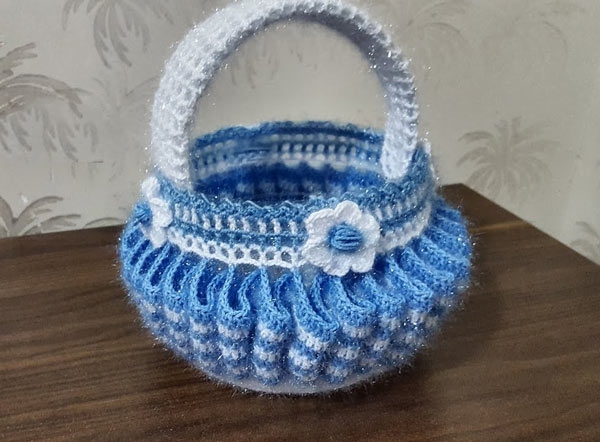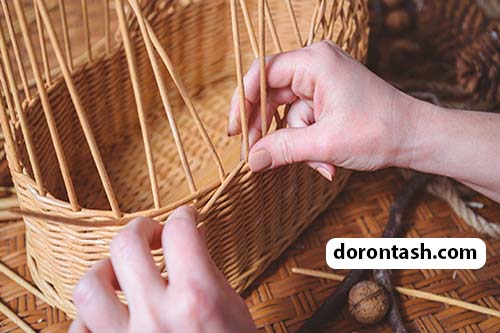
In this article, we want to share the Basket weaving training with you. Basket weaving is one of the very old arts that is mostly done in the northern and southern parts of the country and is very popular in these areas. Of course, basket weaving is also done in other cities of Iran, but because the raw materials needed to do this work are more available in these areas, they have surpassed other cities.
Basket weaving training video
| Important centers of basket weaving | Basket weaving |
| History of basket weaving | Types of baskets |
| Bamboo basket weaving steps | Basket weaving with mat |
| Application of bamboo basket | Basket weaving with tricot |
| The place where bamboo straws are made | Basket weaving with rope |
| Learning how to weave baskets with handles | Basket weaving with yarn |
Types of Basket weaving training
1 . Teaching basket weaving with mats
This type of basket weaving is often done from generation to generation among the members of each family and often has a traditional form. To make a wicker basket, it is better to read the article on weaving wicker. In this work, they use different types of wood that have different thicknesses. This type of wood is cut to the required size and in the next step, it is put into boiling water to remove the top layer of the wood. Then the wood is dried and used for texture. The color of this type of wood is yellow, and it turns golden by giving it polished oil.
Wicker basket training video
Teaching mat weaving is one of the arts that you can earn by learning it. There are several wicker basket tutorials in this video. One of the trainings is the training of basket weaving with wood.
By seeing them, you may not become a weaver, but you will learn how the work steps are in general.
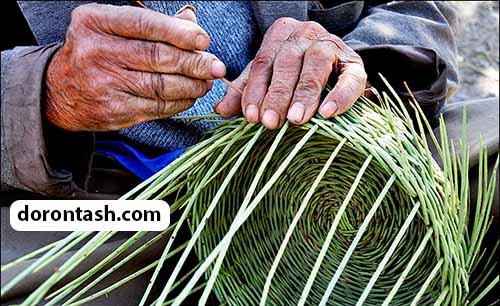
Another name for this type of wood is marwar, and therefore this type of basket weaving is also called pearl weaving. The weaving of mat baskets is done upside down and they are made in rectangular, round, without or with a door.
2 . Basket weaving training with tricot
After the wicker baskets, it is the knitted ones that are very popular. Tricot yarn used in basket weaving is a special yarn that is used only for this purpose. This thread is highly flexible and can be seen in different colors. The weaving of this type of baskets is done with its own special tool, which is similar to a hook or knitting needle, and it is used as a basket, a spice holder, a basket for socks, clothes, and also a place to store personal belongings.
You can easily earn money by weaving baskets at home.
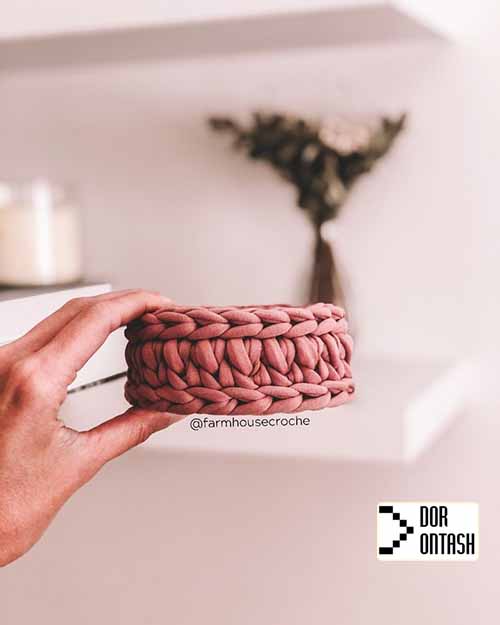
3 . Basket weaving training with rope
In this type of basket weaving, you can use all kinds of ropes with different thicknesses. In addition to this, the variety of colors and the simplicity of doing basket weaving with ropes have attracted a lot of attention. In this work, glue is usually used to connect the rope to each other in a desired shape and finally make a basket.
4- Teaching basket weaving with yarn
In teaching mat weaving art with yarn, it is somewhat similar to weaving with tricot. Different types of yarn with different thicknesses and colors can be used for this purpose. These types of baskets have less strength and are made in a fancy shape and in small dimensions, and are often used as a place to store stationery, sewing supplies, etc.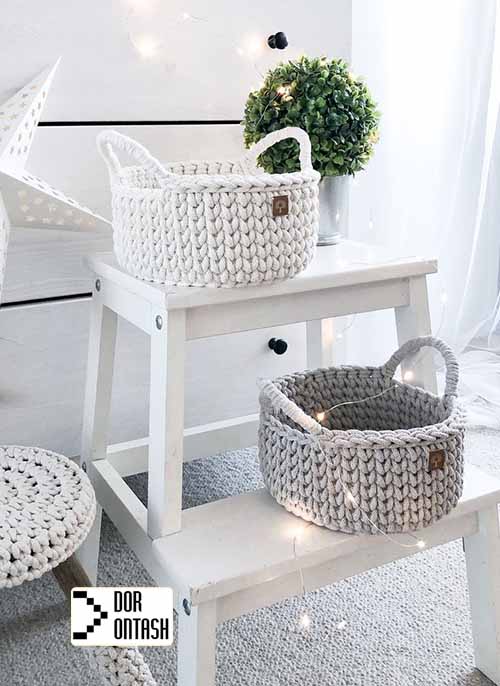
Where are the important centers of basket weaving?
1 . Southern regions like Khuzestan
One of the basket weaving areas in Iran is Khuzestan province, especially cities such as Dezful. In these areas, basket weaving is done with palm tree fibers and therefore it is more common in rural areas.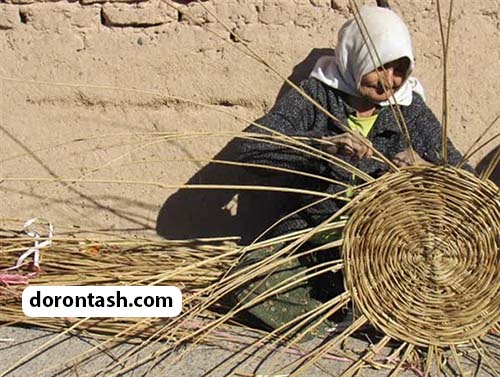
2 . North of Gilan province
Pearl weaving is common in this part of the country and these pearls are usually collected from the surrounding areas of Malair, Maragheh, Karaj and Tehran. Of course, pearls are also procured from other regions and Gilan province itself.
3 . Central regions of Iran
4 . South Khorasan province
One of the basket weaving areas in Iran is South Khorasan province, especially cities such as Qaynat, Nehbandan and Birjand. In these areas, wicker basket weaving is done with willow and therefore it is more common in the foothills of the province.

Basket weaving with bamboo in Gilan
In Gilan, wicker baskets are made with bamboo reeds. Bamboo is a plant from the forage, grass, carmine or wheat family, which botanists have placed under the family ( Bamboo -Odiuc) and considered it to be one of the giant grasses. Bamboo is known as reed in Persian language. Allameh Dehkhoda considers the word “bamboo” to be French in his dictionary and mentions: “… bamboo, reed, a type of reed with nuts, from which they can be used to make a teaching stick and does not break by bending, pump, that which is used with water And to lift oil and the like from wells or deep containers.
This plant always grows on the slopes of mountains and hills and along rivers and swamps with humidity of 65 to 90 percent. This is why the shores of the Caspian Sea, especially the Gilan region, are the best areas for growing this plant. Botanists have known and used many types of it.
In the topic of basket weaving with bamboo, it should be mentioned that the stem of this tied plant is the most suitable place for the growth of a new branch. About 50 to 200 reed branches are obtained from each stem, which are very hard and slow-breaking and impervious to water. Bamboos are seen in different colors, green, black, brownish, maroon, creamy yellow and yellow. The similarity of these herbaceous plants is only in the white cotton inside, which is called “bamboo flesh”. First, these cottons are sharpened with a knife, then they are sliced. Harvesting of this plant is usually done in autumn and early winter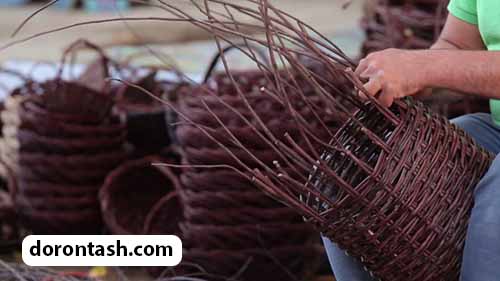
History of bamboo basket weaving in Gilan
The emergence of bamboo basket weaving and its recognition in Gilan handicrafts at the same time as the beginning of tea cultivation in Iran (19th century) and the spread of bamboo handicrafts are considered to be the work of Chinese men. Ms. Fakhraei, a handicrafts expert, writes: “The Chinese used bamboo fibers to make dry tea grading sieves and to move it.” Because they believed that woven bamboo baskets do not make tea smell bad. After establishing more tea cultivation in Lahijan and finding a suitable place for bamboo cultivation, they brought some bamboo species from their land and taught the people of Lahijan how to weave baskets and how to chop bamboo.
According to the available historical documents, knowing the bamboo plant and its uses such as basket weaving has been common in Iran and Gilan for a long time, and like other industries, after being abandoned for a period of time, it has become common again under the pretext of tea entering Iran. For example, on the stone inscriptions found in Sarpol Zahab from the second half of the third millennium BC, it shows the kings of Assyria from Ornansheh to Assyria Banipal wearing baskets made of reed (bamboo) and clay and mud. They carry them to build their new places of worship.
Sargon I, the founder of Akkad, wrote on an inscription: “My poor and humble mother conceived me and gave birth in secret, and put me in water in a reed basket and sealed it with tar.”
Bamboo basket weaving in the reign of Kiaiyan
Rabino quotes Zahir al-Din and writes: “Sayyid Razi Kiya (829 AH), the governor of Biyeh, built a large pond there, where they hunt ducks.” A lot of straw and grass grow in this pool and they use them to make mats and baskets, etc.”
Nasser period
Also, in the Naseri period before the start of tea cultivation, Ravandi writes about the construction of buildings in Shimran: “… bricks are used only around the doors and windows, and the wood of Tabrizi trees and reeds brought from Rasht are used for covering. They use roofs.
These statements indicate that maybe the people of Gilan did not know this plant as bamboo in the field of wooden handicrafts of Gilan in the old days. But bamboo was one of the most practical tools in their daily life. In any case, due to the lack of sources and the remaining works, the age of bamboo basket weaving is not estimated to be more than one hundred and fifty years and it is considered a nascent industry.
The place where bamboo straws are made
Bamboo basket weavers usually procured the reeds they needed from the edges of swamps and marshes, especially the Anzali marsh. With the increase in the demand of weavers, some households in Sang Bijar and Kardam villages of Foman started planting it in their paddy fields. The supply and demand also encouraged the nearby villagers to grow this plant by sub-cultivating the fields.
Currently, most of the weavers get the bamboo they need from Foman, Lialistan, Lahijan, Siahkol, Anzali and Ghasem Abad, Rudsar. Basket weaving with bamboo is only available in the eastern cities of Gilan, such as Lahijan, Langrod, the province, as well as Rasht and Sera Monastery, and the work product is exported to neighboring cities and even outside the province. In these cities, bamboo is often woven in a single color with its original color, except for Sera Monastery and Rasht, where the weavers use colored bamboos.
Bamboo basket weaving steps
After dyeing, the weavers hang the bamboo in a corner of the Nemur shop or workshop away from the sun to dry over time, because the sun makes the bamboo brittle early. Dr. Hassan Dadres writes:
Due to its elasticity and lack of side connections such as boards, wood, ropes, nails and expensive devices, this plant is easily woven even in homes.
Application of bamboo basket
The most important use of bamboo from the past to the present, especially in the villages, is building yard gates, hedging houses and fields, making a kurdkhale, a device for drawing water up from a well, connecting to aerial nets for hunting birds and fishing nets, fishing sticks, ladders. , pen, nilbek (flute) and use instead of oars in karjis (small passenger boats), construction (roofs of houses). Also, bamboo is used in the paper and synthetic silk industry, as well as in the electricity industry in India, due to its high amount of cellulose.
The most important bamboo handicrafts are woven baskets with bamboo, the types of which are:
- eating nuts;
- eating chocolate;
- eating sweets;
- Fruit eating and…
In addition to that, you can use it with it, garbage cans, hats, all kinds of handles (umbrellas, canes, knives, tools and work tools, etc.), lampshade caps, all kinds of frames (wall clock frames, photos, posters, etc.). …) making all kinds of trays, chairs, etc. Of course, these handicrafts are often woven in a circular, upside-down manner and have solar, star, chain, hexagonal, radial, and rattan textures.
Bamboo basket weaving masters include:
- Mohammad Kazem Nowrozi,
- Abbas Barnawi,
- Safar Mohammad Mazhari,
- Ghazali Mahdavi,
- Manije Abdullahzadeh,
- Syed Javad Fallah Abbasi Lialestani
cited
Stylish and practical crochet basket weaving tutorial
You can weave this crochet basket to any size you like. Two colors of needle thread are used in the weave of the basket with handles , but you can use any thread and any color you want.
A disposable bottle is placed inside the basket to take shape and stand firmly. You can use any bottle size for texture.
If you intend to make a solid , one and a half liter soda bottles are suitable.

Stylish and beautiful basket weaving tutorial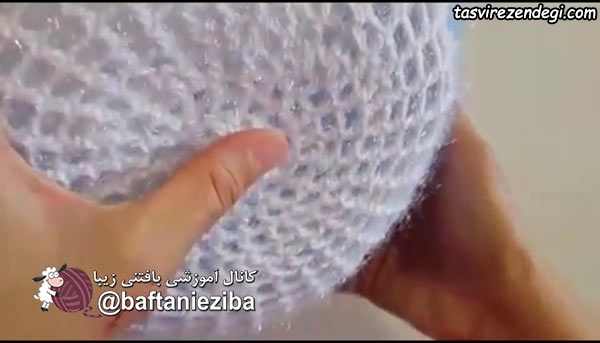
As you can see, the bottom of the basket and the handle of the basket are woven.
A sample of needle yarn, which of course has different brands.
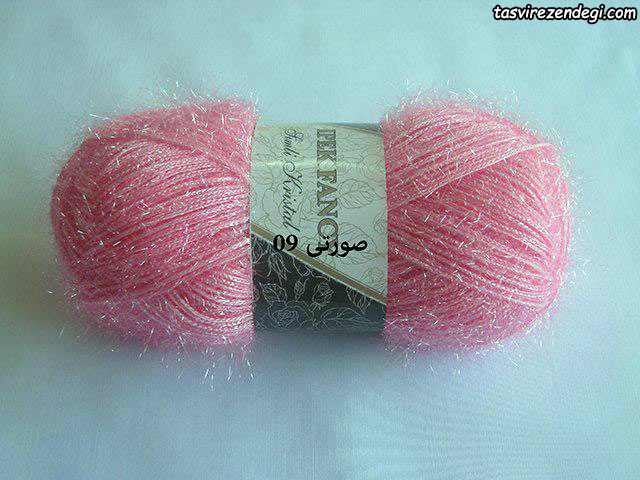
The first stage of basket weave: sole weave
Knit 8 chains and shorten the first base chain to make a loop.
Chain 4 and insert a long leg into the ring . 7 times (make a chain and weave into the long base loop),
make a chain and make a short chain to the third chain of the first base row.
We have 8 cells.
Weave 5 chains and knit on the base of the row before the long base.
Knit 2 chains and knit a long chain on the chain of the previous row (between two long chains).
Now 3 times (2 chains, long base on the base of the previous row, 2 chains, long base on the base of the previous row, 2 chains, base on the chain)
make 2 chains and connect to the third chain of the first row.
We will have 12 cells.
In the third row, knit 5 chains and knit 1 base on the 2 chains of the previous row.
2 times (2 chains, put 1 base on the base of the previous row).
Make two chains and put 1 base on the 2 chains of the previous row.
In the same way, it is added to the end of row 2 in the middle of the long base.
The cells are 18 folds.
In the fourth row, knit 5 chains and put a long base on the base of the previous row.
2 times (2 chains, put 1 foot on the foot of the previous row.)
Make two chains and put 1 base on the 2 chains of the previous row.
To the end of the row, add three in the middle of the long leg.
You will have 24 net houses.
The fifth row is added four times in the middle of the long base.
You will have 30 net houses.
Sixth row
Just add 3 legs at equal intervals.
In other words, we add a total of 3 bases in the sixth row.
You can repeat (knit 9 houses and then one base on the chain. 2 chains and one base on the base) inside the parentheses until the end of the row.
Start the seventh row with 6 chains and weave 3 chains between the bases. No base is added.
The 8th row is knitted like the 7th row.
9th row, starting with 7 chains, we knit 4 chains between the bases.
The base is not added.
The tenth row starts with 8 chains and 5 chains are woven between the bases.
Row 11 is knitted like row 10.
The 11th, 12th and 13th rows are knitted like the 10th row.
During the weaving of the bottom of the basket, put the container on the work and measure.
The second stage of weaving a basket with a handle: weaving the body
Now it’s time to weave the body of the basket.
The body of the model is one row in the middle with blue and white yarn, you can change the number of colors as you like or knit a single color.
Chain 3. This chain is long as a base. Knit 5 long stitches on the chains. Chain 2.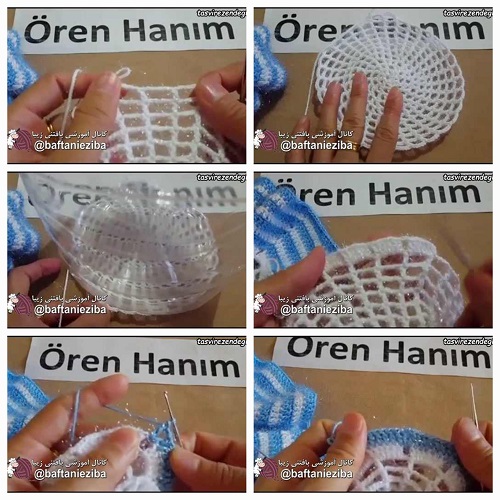
Until the end of the row, knit 6 long stitches on the chains and make two chains.
Shorten the two chains at the end of the row to the third chain at the beginning of the base row.
Connect the blue thread, make a chain and weave a short base and 3 chains on two chains.
Knit a long stitch on each of the 6 stitches of the previous row.
Knit two chains and one long base on two rows.
In this way, 2 bases are added to the sides of 6 bases and the number of long blue bases becomes 8.
Until the end of the row, knit 8 long stitches and a chain.
The next row is woven with white. Like the previous row, a long base is added on the sides of the long bases and their number becomes 10.
Knit another 5 rows in the same way.
In each row, the number of tall bases is increased by 2.
In the eighth row, we will have 20 long blue legs.
The third stage of weaving a basket with a handle: weaving the edge of the basket
Knit with white thread on two short base chains.
Make 5 chains and knit a short base on the next two chains.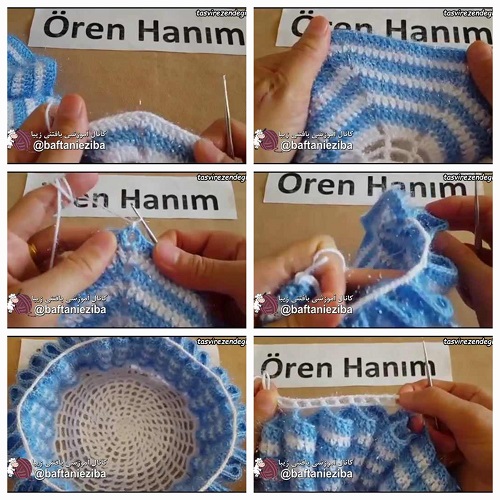
In the same way, knit 5 chains until the end of the row and knit a short base on the 2 chains of the previous row until the fabric gathers.
Our texture so far is like this.
Add 5 chains and knit 5 chains on the middle chain of the row before the long base.
2 chains, knit on the short base of the row before the long base.
Until the end of the row:
knit 2 chains and knit a long base on the middle chain of the previous row.
2 chains, knit on the short base of the row before the long base.
Knit a row with blue.
Knit another row with white.
Weave a border with blue yarn in such a way that on 2 chains, weave a short base, 3 chains and a short base respectively.
It works like this.
The fourth step of weaving a basket with a handle: sewing the body to the container
Now we put the container inside the tissue and determine the place of the cut.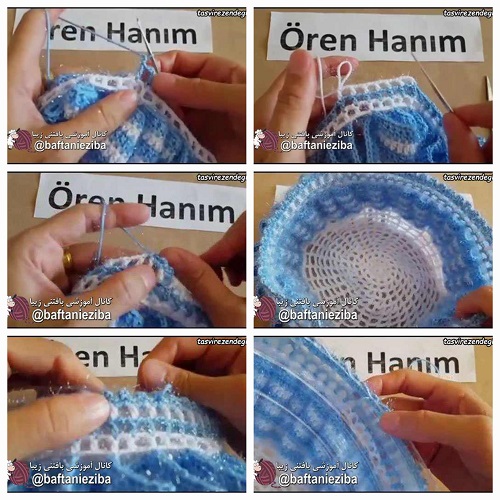
Pull the fabric up a little to determine its length.
Place the extra dish.
Sew the fabric to the container with a needle.
Insert the needle into the border picots once in a while and stitch.
Sewing view from the inside
The fifth stage of weaving a basket with a handle: weaving and sewing the handle
For the handle of the basket, cut a strip of desired width from the protrusion of the container.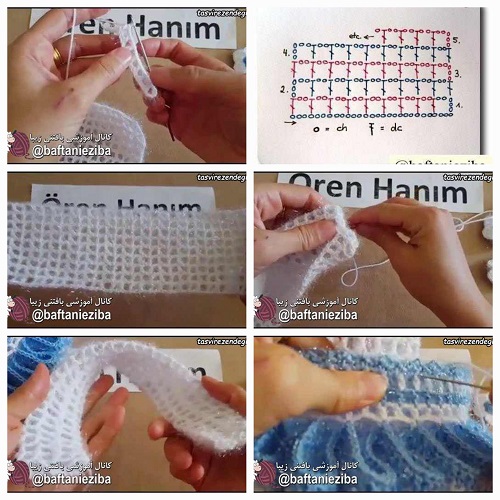
Here it is 4 cm.
To cover the handle, weave with white or blue.
As long as the handle and twice as wide.
Square mesh map
Put the handle in the middle of the cover, bring its two edges to the handle and sew.
Sew the edge.
Sew the middle seam as well.
like this
Sew the handle to both sides of the basket.
The final stage of decorating the basket
If desired, decorate the basket with small flowers.
Chain 6 and connect to the first chain with a short base.
Knit 5 chains and 1 long base in the ring.
4 times (weave 2 chains and 1 long base.)
Knit 2 chains and fasten to the third chain of the first row.
For each petal, one chain, 2 long bases, 2 double bases, 2 long bases and 1 braided chain, and make an invisible knot on the long base of the previous row.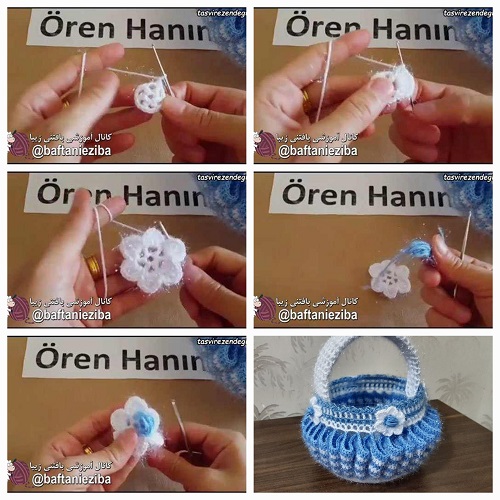
Make two chains for the center of the flower and tie a puff knot in the tail chain. Make a chain and thread.
Take the excess yarn at the beginning and end of the puffy knot to the back of the flower with the help of a hook and tie it.
Decorate the edge of the basket (next to the handles and between the handles) with flowers.
The basket weave is finished.
This is our beautiful basket in basket weaving training
In this article, we tried to introduce you to basket weaving with mat, bamboo, tricot, wood, etc. This article may not be a comprehensive tutorial to start your work, but it will open your eyes to basket weaving, its types of weaves and materials. Which basket weaving is more attractive to you? According to your opinion, we will comprehensively teach one of the types of basket weaving in future posts.
Frequently asked questions about Basket weaving training
Frequently asked questions about basket weaving In what areas is basket weaving done more?
Basket weaving is one of the very old arts that is mostly done in the northern and southern parts
Why does basket weaving have a special place?
Basket weaving is an ancient art that has become an attractive business due to its many uses.
Are there different ways to find a basket?
There are many types of basket weaving Basket weaving with mat Basket weaving with tricot Basket weaving with rope Basket weaving with yarn

